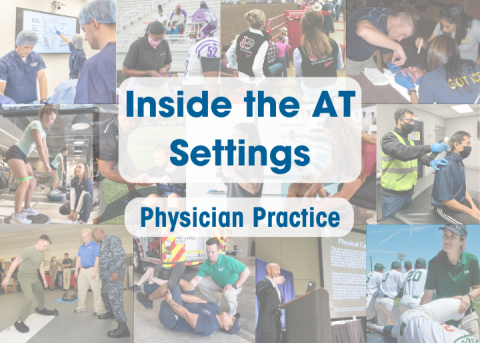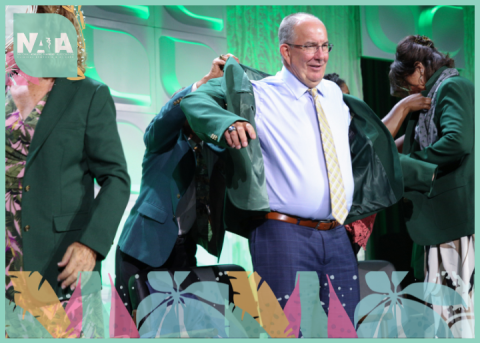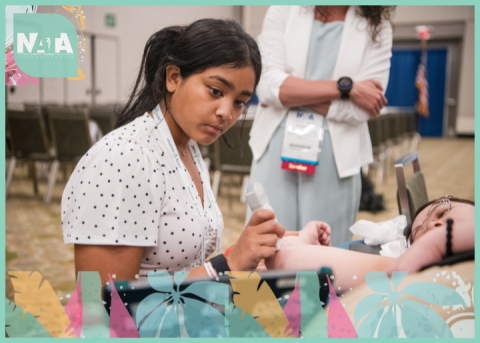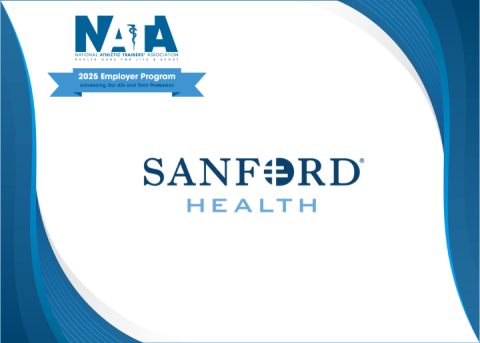
Introduced in the April NATA News, this NATA Now article series provides insight into the different athletic training settings as well as information athletic training students and interested ATs need to know. The series also provides tips from members on how to succeed in each setting.
Michelle Holt, MA, LAT, ATC, athletic trainer at Columbus Community Hospital, has worked in the physician practice setting for six years. Holt said she forged a career in physician practice via her professional networking relationship with a surgeon who envisioned utilizing ATs in her sport orthopedic clinic.
“Dr. Lindsey Dietrich, MD, was determined to make it happen and did all the tedious work of coordinating with HR and administrators to create the [athletic trainer] position before I was hired,” Holt said. “I went in with a lot of support, kept a very open mind, was given a chance to learn each team members’ roles and abilities, then carved out my niche. With common goals and transparency of everyone involved, it was a beautiful collaboration.”
Below, Holt shares insight into the physician practice setting.
Typical Makeup of Your Population
Of course, we love to see competitive athletes, but our typical patient population is almost any age, demographic or physical activity level with a wide range of musculoskeletal injuries. Even sports medicine clinics see their fair share of patients with osteoarthritis.
Non-AT-Related Skills/Education/Certification Required or Helpful for Your Setting
If you were to poll a group of ATs already working in a physician practice setting, you are likely to get different answers. There is significant value in the advanced education and experience from completing an orthopedic residency. However, that opportunity may not be realistic for an AT in a situation such as changing job settings mid-career, and I am proof that isn’t the only way to transition to or be successful in this setting. An AT might find a job where the physician is interested in teaching some of those non-traditional skills. However, in a competitive market it would be helpful to find resources where you can learn casting and splinting, extensive durable medical equipment application and suturing if the goal is to assist in the OR. To best prepare for proposing a new job in a clinic or interviewing for one available, I highly recommend shadowing in a clinic first to understand the workflow, all the roles and how to apply your AT skill set effectively.
Additional certifications may be helpful to demonstrate specialized experience and “speak” a more common language to health care administrators. However, jobs may not require any. Keep in mind additional certifications don’t change the scope of practice for athletic training licensure, nor does it automatically make an AT qualified to do any job. Commonly used credentials on the market are OTC, ROT, OPE-C, OPE-SC, OPA-C and the new BCS-O, the orthopedic specialty certification from the Board of Certification for the Athletic Trainer. The alphabet soup can be very confusing, so it’s important to do the research to understand the differences between these, the various requirements to earn these credentials and if they will be beneficial for you. Keep in mind some of these credentials are made specific to athletic trainers who are advancing their skills while others may be for any health care professional with certain experience, including less education. If you need help clarifying, reach out to us on the Physician Practice Committee within the NATA Council on Practice Advancement.
Common Injuries Observed or Encountered in Your Setting
As expected, knee injuries, such as ACL tears, patella instability or meniscus tears, and shoulder injuries, such as labrum tears, are very common. We also see plenty of fractures both young and old in both upper and lower extremities, and major tendon tears including rotator cuff, Achilles tendon, distal biceps, etc. Pediatric and younger adult cartilage injuries are less common, but really interesting conditions to manage as they have significant effects on activity participation or livelihood as well.
Traits of a Successful AT in Your Setting
I don’t think the traits will differ significantly from success as an AT in another setting, but it may be applied differently in a physician practice setting.
- A do-er: Tasks both big and small come at us constantly during clinic. Effective prioritizing and pivoting between tasks quickly is necessary. It can be a difficult setting for someone who likes to complete tasks on their own time or pace. Working calmly, but also with a sense of urgency, will set you apart.
- A communicator: The wide range of patient population makes it vital to communicate effectively with all different types of people in all modes and styles of communication. We need to be comfortable with two-way communication strategies in any situation. Our communication is the glue that holds it all together to ensure the best care for our patients.
- An adaptor: Health care providers are generally nice people, but when working with physicians and their teams in this close capacity, we’re dealing with strong personalities and intense moments every day. Be a learner. Learn when to speak and adapt to the personalities to manage the teamwork dynamics day to day or even task to task, especially when multiple disciplines are collaborating in care.
Misconceptions About Your Setting and/or Patient Population
From my experience, misconceptions include:
- Being treated or utilized as a glorified medical assistant. We’re so much more to our providers and our patient care. Our role in our clinic can be broad and sometimes encompasses menial tasks, but we should be prioritizing tasks that capitalize on our unique skill sets.
- It might be hard to understand what exactly it is we do in the ortho clinic or when assisting in the OR unless you have experienced it firsthand. It’s challenging in different ways. In a comprehensive sports medicine clinic, just about anything could walk through the door, meaning we aren’t just treating young athletes. There is a wide range in our patient population in regards to age, condition and activity level, and so are the ways to meet their needs.
- This is not always a 9-to-5 job with a strict 40-hour workweek. The appeal is a schedule that is more consistent and less likely to consume nights or weekends. However, the hours can extend beyond normal and also be just as exhausting when grinding with constant patient care for a packed full clinic day. The culture in sports medicine clinics is we are usually going to do more.





